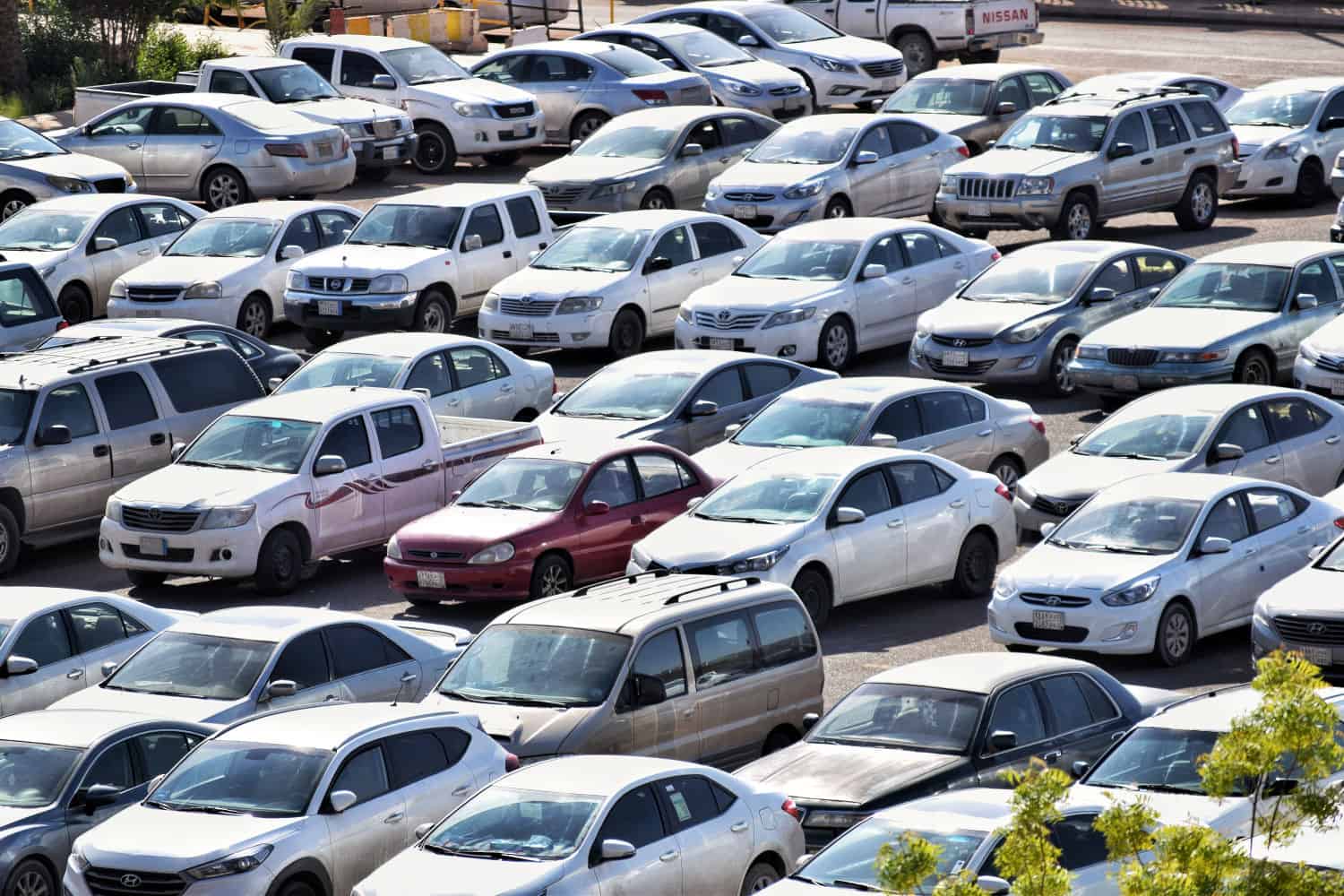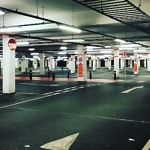Parking Management Challenges

Parking challenges began with the invention of the first automobile. However, it grew worse as the population expanded and the process of urbanization progressed. For example, the United States presently has eight parking spaces for each car in the country. Parking lots take up to 30 percent of an average city.
The collective amount of parking spaces in the US is as significant as in West Virginia.
With the pandemic, there have been more innovations to solve these parking challenges. The basic concept that breeds parking challenges is the gap between parking demand and parking supply in urban areas and cities.
A deeper look into these issues shows that these challenges do not result from a lack of parking spaces but inefficiency in using available spaces. Solving these problems requires smart solutions and technological innovations.
The Challenges
Several challenges affect parking management; some have always existed, while others sprung as a result of an increase in the number of vehicles.
- A lot of historical and old cities were planned when cars never existed. This meant the streets were narrow and not enough space for the number of cars we have today. The population density of these cities was at reasonable levels compared to now. As the population increased and cars became more available, these streets couldn’t accommodate vehicles for parking and moving. As a result, the cars have exceeded the planned capacities.
- More facilities and activities have sprung up in the same areas. More activities are being done in places with commercial facilities, government institutions, and government buildings, which means an increased rate of cars in the same area, leading to a jam-packed space.
- In most newly planned urban areas and cities, there is often a misjudgment in the provision of parking demand anticipated. This is due to the fast rise in the rate of vehicle ownership, especially among the middle and high-income classes of the populace. The reason for the increased car ownership is the flawed mass transit system in these new areas, such that these classes of people cannot depend on it.
- A common issue that affects parking management in new urban areas and cities is the tendency to provide parking spaces only for curb parking and street-level parking areas. Lands are not allotted for parking structures with multiple floors to accommodate the rise in cars in need of parking facilities. A good example is New Cairo City and Ninetieth Avenue. There is no single land allotted for parking lots despite the several commercial centers and office buildings in these locations.
- Old cities often experience several changes due to succession and invasion, bringing about constant car usage changes. While some periods require more residential cars, other periods are set up to welcome more commercial vehicles, affecting planning for parking management.
- Violation of zoning regulations and building codes changes plans to be put in place by building planners for sufficient parking lots.
Solution
The Present
Recent studies have shown that the rising challenges in parking management are not for lack of space. For example, New York has about 1.8 million parking spaces in the US, while Philadelphia has nearly 2 million. Even a tiny city such as Jackson, WY, with 10,000 people, has about 100,000 parking spots.
We can agree that parking management challenges are more about the absence of real-time data on vacant spaces with these insights.
Most drivers hover for about half an hour during peak hours before they find a parking space. Drivers that can’t be patient enough end up parking illegally. Therefore, the present solution to this problem has come through the rise of smart parking innovations.
Current smart parking innovations don’t involve automated cars that can drive and park themselves, but they help reduce your time looking for a parking spot. Present innovative parking solutions help you identify an available spot minutes before you get to your destination.
To achieve this, special smart parking sensors develop from the IoT (Internet of Things) concept, collect the info and communicate it to a central unit. This way, the system can provide real-time data on available spaces for drivers.
With these innovations, drivers now can easily access information on the availability of parking spaces right from their smartphones. In addition, IoT also monitors traffic and spots parking violations faster.
The Future
The parking management industry constantly evolves as more cities are affected by traffic congestion and the non-availability of accessible parking. Even though there are more innovations for parking, there is more room for technological advancement to help solve parking problems.
Solutions like Autonomous cars can transform urban mobility within the next few decades. It will have a considerable effect and reduce the stress levels involved with parking.
Adopting autonomous cars will bring many changes to driving generally, but will that stop people from driving? The blend of the present and the future will be critical to the long-term solution to parking challenges.
Some of the innovations in the parking industry include:
Automated parking lots
More parking lots worldwide are using automated systems, and it has proven to be a great innovation to parking management. The process involves using machinery in the car parking process, thereby improving space across parking lots.
The process starts when the car arrives at the automated parking lot. The lasers scan the vehicle on arrival before moving it to a platform that will elevate it before transferring it to a parking spot. The functionality of an automated parking lot is similar to that of the automated storage bracket. Using an automated parking lot increases the number of cars in a traditional parking lot by four times. The effectiveness is helped by how the driver exits the vehicle before the machines take over, reducing spaces between cars.
Automated parking systems will reduce the space required for a parking lot, and there will be less need for more parking lots as the available ones will accommodate the current number of vehicles. In addition, parking lots will be more vertical than horizontal, as machines will park the cars instead of humans.
The Internet of Things
The world is utilizing the Internet of Things (IoT) in several ways. For example, when devices communicate online, they are using the Internet of Things. This technology has been helpful in several ways, making processes seamless and more straightforward. For example, the Internet of Things has found its way to parking management, helping to improve the processes involved in parking.
A parking lot that uses IoT in its system will allow drivers to see the parking space in real-time via an application or a website. This system allows a driver to know if there is a space to park the vehicle before getting to the parking lot.
The Internet of Things has reduced the average duration spent looking for a parking space by 43 percent. Another direct benefit of this is the decrease in emitted carbon by these vehicles, as they spend less time moving around.
While the IoT has many benefits for the environment, it also increases parking efficiency, with more parking lots getting filled. Filling more parking lots is way better than leaving several parking lots unfilled. To this effect, cities can close some parking lots and use them for other infrastructures to develop the city.
Parking Management Software
A practical solution to the challenges in parking management is the use of parking management software. Parking in a fast-paced environment, as we have now, requires quicker processes, and the time involved in generating tickets must be shorter.
Parking management software also helps regulate traffic across different locations such as offices, residential spaces, hospitals, shopping malls, and other public environments.
A well-functioning parking software platform or application can ensure better compliance and increase revenue. It not only guarantees payment for using the parking lots, but it also provides that those who break the rules are fined. This innovation in parking management has birthed a lasting solution to parking-related difficulties.
Advanced parking software helps regulate car entry and exit in parking lots more comfortably, adjustable, and appropriately. With this, authorities can improve their parking system and manage traffic throughout the day.
Smart Parking Management System
Parking management is part of the latest trends that have improved the parking industry. Parking management software is already in the present and will contribute majorly to shaping the industry’s future.
OperationsCommander (OPSCOM) is a parking and security management platform with over 20 years of experience in providing parking solutions. Innovation, development, and a seamless user experience are core principles of OPSCOM.
Basic features such as online permit management and virtual payments are only a tiny part of the OperationsCommander offers. They also offer advanced solutions like managing parking violations, resolving disputes, and choosing between virtual or physical permits, among other features.
What gives OPSCOM the edge over its competitors is how it put the customer’s needs first. This is evident in every new installation as it is fully customizable to meet the client’s needs. If a client already has parking management technology installed on location and it’s important to keep using it, the platform can be modified to integrate with it. If a client wants an internal reprimand process instead of a violation citation that results in a fine, the platform offers a solution.
Features on the OPSCOM platform
Built-in mobile parking payment options
This feature allows users to add, remove, and update their payment methods online. This feature reduces the workload on the administrators.
Permits, violations, and incidents managed in one place
Parking users can choose and update the type of permit they have, track violations associated with the permit, and resolve incident disputes with linked evidence, all without standing in line or stepping foot in an office. If a user feels like a violation report has been made in error, they can appeal the decision online as well.
Print your hangtags, or choose a virtual permit
OPSCOM provides the option for parkers to use either a physical or virtual permit.
Complete customer database with email notifications
The parkers can view and manage their permits 24/7, but the administrators can communicate via a comprehensive database. If there’s an issue with an account, the parking user will get an email letting them know.
Customizable permit types, lot definition, waiting lists, and pricing
Administrators can choose the parameters of the permits they offer, categorize certain lots for specific purposes, manage demand with waiting lists, and set their pricing for each permit.
License plate recognition technology
Getting the OPS-COM platform means that you’ll have everything you need for contactless parking.
Full dispatch logging, alarm, and alert process
OPS-COM helps security personnel keep accurate records during and after the event if there’s ever a security incident.
Handheld patrol units with LPR and GPS mapping, along with real-time data – Security personnel can easily track which vehicles are in which lots, ensuring that parkers use their permits correctly.
Easy payment provider integration
OPSCOM is built to integrate seamlessly with whichever payment provider the client chooses.
Conclusion
The major challenge with parking management is the efficient use of parking spaces. With the rise of innovative methods like parking management software, this issue could be solved soon.
The challenge now comes from the adoption of these innovations by the authorities. Private parking management firms are leading the way, but government institutions must also key into the latest solutions for change to be quicker.


